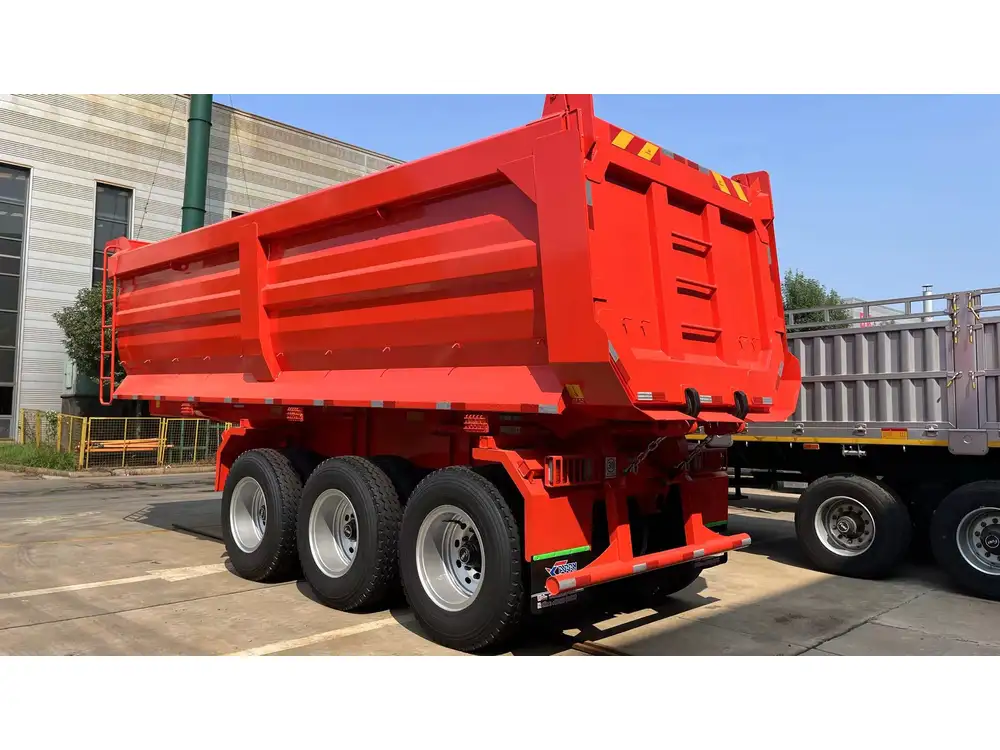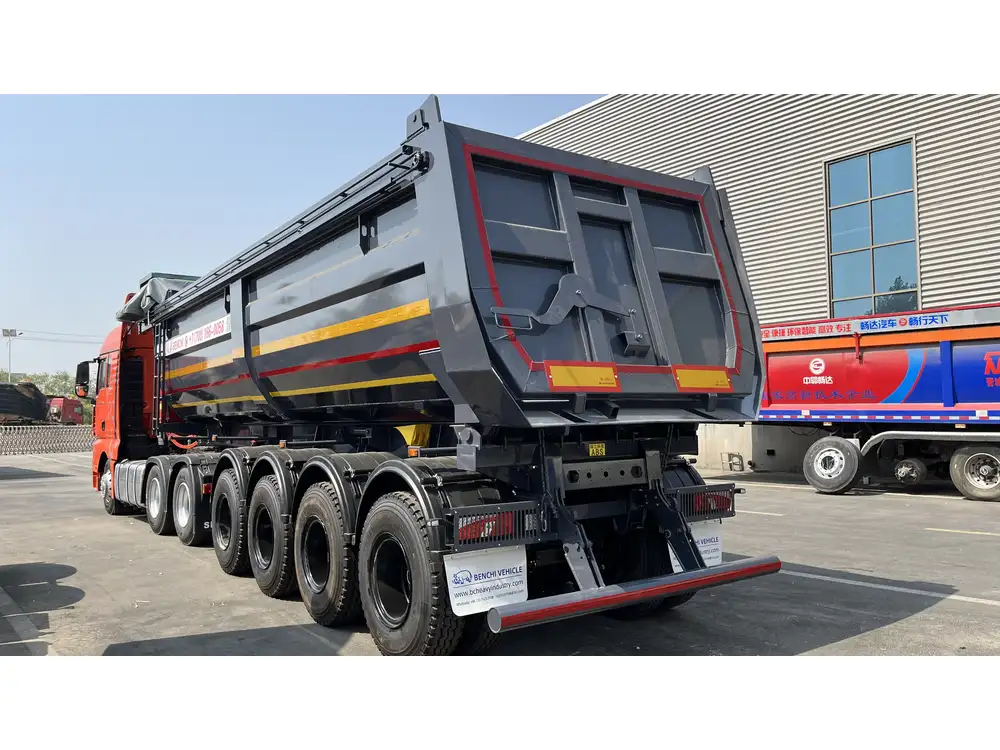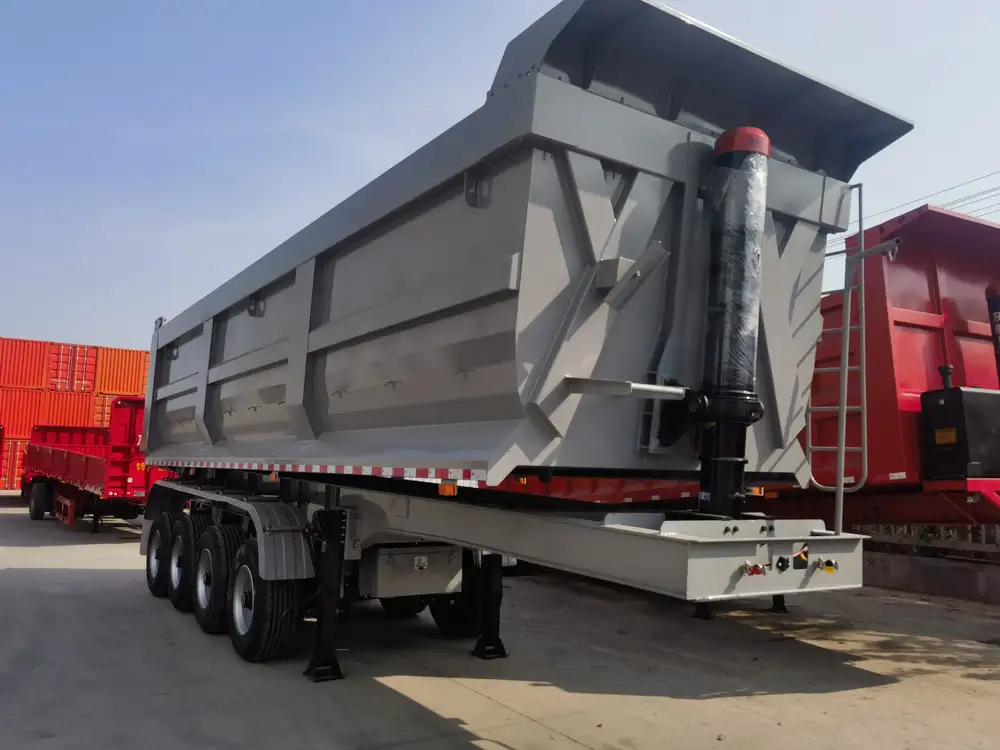In the realm of logistics and transportation, having the right equipment is imperative for efficient operations. Among the array of options available, the 20ft skeletal trailer stands out as a versatile and effective solution. In this comprehensive guide, we delve into the various aspects of 20ft skeletal trailers, ensuring that when you consider purchasing, you are fully informed of your options, features, and best practices. By the end of this article, you’ll not only understand why a skeletal trailer is an asset but also be equipped to make an informed purchasing decision.
What is a 20ft Skeletal Trailer?
Definition
A skeletal trailer is specialized equipment designed for transporting containers. Primarily employed in intermodal transportation, these trailers are lightweight, robust, and engineered for efficiency. The 20ft version is specifically built to accommodate containers of similar dimensions, making it ideal for shipping, logistics, and freight hauling across various terrains.

Essential Components
- Chassis: Often made from high-strength steel, the chassis forms the backbone of the trailer, providing necessary structural integrity.
- Suspension System: This system ensures that the load is balanced, enhancing safety and driving comfort.
- Axles: Typically equipped with dual axles, a 20ft skeletal trailer optimizes weight distribution, promoting better handling.
- Kingpin: The connection point between the truck and the trailer ensures a secure attachment and ease of maneuverability.
- Container Locks: These locks are integral for securing the container during transit, preventing movement and potential damage.
Advantages of Using a 20ft Skeletal Trailer
- Lightweight Design: Reducing the overall weight allows for greater payload capacity, thereby maximizing profitability.
- Durability: Constructed from high-grade materials, skeletal trailers can withstand harsh weather, diverse road conditions, and heavy loads.
- Versatility: Ideal for both short-haul and long-haul transportation, these trailers adapt seamlessly to various operational needs.
- Cost-Effective: Lower maintenance costs and increased operational efficiency contribute to reduced overall expenses.
Application Scenarios for 20ft Skeletal Trailers
When considering a 20ft skeletal trailer, understanding its application scenarios is vital. Here’s a glimpse into various industries where these trailers flourish:

1. Shipping and Logistics
Companies engaged in shipping containers often rely on skeletal trailers to maximize efficiency. The design accommodates multiple container types, optimizing loading and unloading processes.
2. Warehousing
A crucial component in warehousing operations, these trailers allow companies to streamline the logistics process by making the transfer of goods more efficient.
3. Construction
With the need to transport equipment and materials, skeletal trailers are increasingly utilized in construction. Their capability to handle various loads makes them an invaluable asset on construction sites.

4. Food and Beverage Distribution
The ability to transport temperature-sensitive containers makes skeletal trailers integral in the food supply chain, especially for perishable goods requiring transit.
Key Considerations When Buying a 20ft Skeletal Trailer
Navigating the purchasing process for a 20ft skeletal trailer requires a keen sense of understanding. Here’s what to consider:
Load Capacity
It’s vital to assess the maximum load capacity of the trailer. Standard skeletal trailers typically accommodate weights ranging from 30,000 to 40,000 pounds. Ensure the option you choose aligns with your operational requirements.

Trailer Specifications
| Specification | Details |
|---|---|
| Length | 20 ft |
| Width | 8.5 ft |
| Load Height | Varies depending on the design |
| Weight | Approximately 5,000 to 7,000 lbs |
Make sure to cross-check these details with your current transporting needs.
Material Quality
Evaluate the materials used in the trailer’s construction, as this affects long-term durability and performance. Steel trailers are generally preferred due to their strength and resistance to wear and tear.
Suspension Type
There are several types of suspensions – leaf spring, air ride, and more. Each has its benefits depending on the loads you handle and the terrains you navigate. Air suspension offers more comfort and longevity, while leaf springs might provide a cost-effective alternative.

Cost-Effectiveness and Maintenance
Analyze the overall cost, including purchase price, maintenance, and fuel efficiency. A higher initial investment can lead to lower long-term costs if the trailer proves to be durable and low-maintenance.
Comparing 20ft Skeletal Trailers to Other Types of Trailers
The decision to purchase a skeletal trailer often comes alongside consideration of alternative trailer types. Below is a comparison to help clarify:
| Feature | 20ft Skeletal Trailer | Flatbed Trailer | Enclosed Trailer |
|---|---|---|---|
| Versatility | High | Moderate | Low |
| Payload Capacity | 30,000 – 40,000 lbs | Varies widely | Lower than skeletal |
| Security | Moderate (locks used) | Low (open air) | High (fully enclosed) |
| Weight | Lightweight | Medium to heavy | Heavy |
| Cost of Ownership | Low long-term | Moderate | Higher |
Distinct Scenarios for Each Trailer Type
- Flatbed Trailers: Ideal for oversized loads or when cargo can be secured easily.
- Enclosed Trailers: Perfect when protection from the elements is critical, such as for sensitive equipment.

The Buying Process: What to Look For
Navigating the buying process of a 20ft skeletal trailer can be intricate. The following steps can serve as a guide:
Step 1: Research Vendors
Investigate manufacturers and vendors. Look for established companies with positive customer feedback and warranties on their trailers.
Step 2: Inspect the Trailer
Upon finding a suitable option, an in-person inspection is critical. Pay close attention to:
- Chassis for signs of rust or damage.
- Suspension system integrity.
- Container locks functionality.
- Overall workmanship and finishing.

Step 3: Evaluate Costs
Acquire quotes from multiple vendors and compare pricing. This includes not only the purchase price but also potential financing options and warranty services.
Step 4: Assess Long-Term Value
Consider what additional accessories or features might add value over time. Optional items include:
- Reinforced load areas
- Spare tire kits
- Advanced locking systems
Maintenance Tips for Your 20ft Skeletal Trailer
After making a purchase, ongoing maintenance is pivotal to ensure longevity and optimal performance. Here are essential maintenance tips:

Regular Inspections
Conduct frequent inspections focusing on:
- Tire condition and pressure
- Brake functionality
- Chassis integrity
- Lights and electrical systems
Cleaning Routine
A clean trailer prolongs its lifespan. Regularly wash the chassis to prevent rust and clear away any debris that may accumulate.
Lubrication
Ensure moving parts are lubricated adequately to avoid wear and prolong service life. This includes axles, suspension components, and the coupling mechanisms.

Documentation
Keep a detailed record of maintenance activities performed. This can be invaluable for resale purposes in the future.
Conclusion
The 20ft skeletal trailer remains an indispensable piece in the logistics and transportation landscape. Its combination of versatility, efficiency, and capacity makes it a smart investment for businesses engaged in container transport. With a firm understanding of its benefits, purchasing considerations, and maintenance needs, you are poised to make an informed decision that will cater to your operational needs. Whether you are a seasoned logistics provider or a newcomer to the industry, equipping yourself with the right information is the first step toward optimizing your supply chain operations.
In summary, whether you’re looking to expand your fleet or replace an aging trailer, a 20ft skeletal trailer is a reliable choice for enhancing your transportation capabilities. Begin your journey today by exploring reputable manufacturers and securing a trailer that aligns with your business goals.



